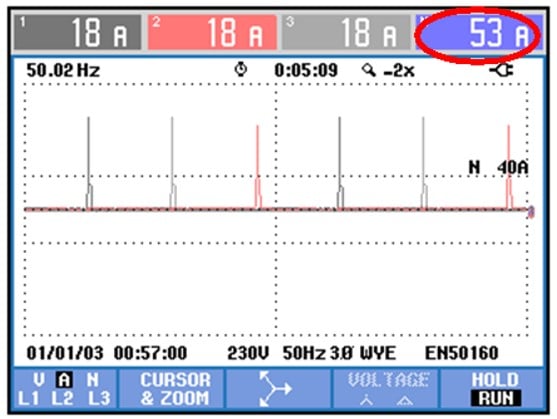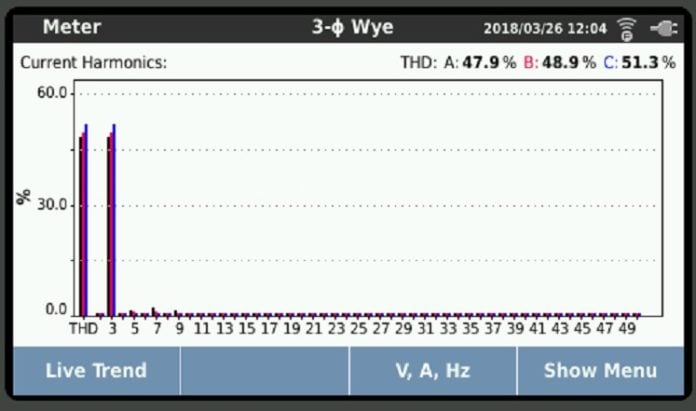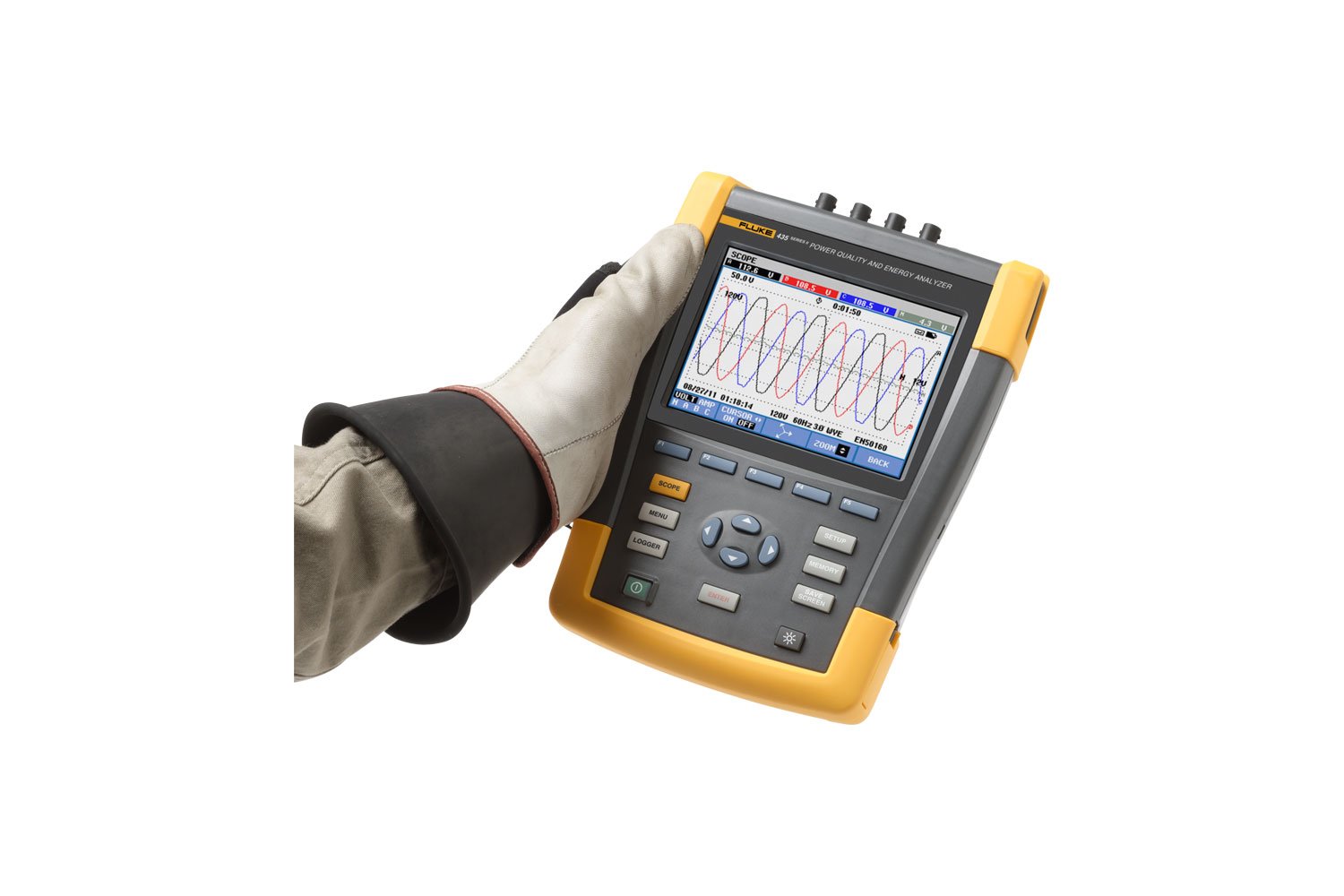Harmonics can cause high neutral currents in three-phase systems — even ones that are balanced. They heat up cables, which can cause fires. Many installers now check their work using a multimeter, but multimeters can’t measure harmonics.
Equipment installation needs a power quality analyzer
Resistive (linear) loads like heating elements and incandescent lights used to dominate electrical supply networks. The last 10 years has, however, seen many more non-linear loads. Examples are LED lights, variable-speed drives, converters, switched-mode power supplies and e-vehicles under charge, not to mention PCs which have been around even longer! Harmonics and unbalance currents (the vector sum of the phase currents) all feed into the neutral line.
Power quality is therefore increasingly important. Loads that draw currents with large inductive and harmonic elements can pollute the utility supply. And that can lead to utility penalty charges, intermittent lock-ups and resets, corrupted data, overheating and premature equipment failure. Worse, although the phase currents in standard installations are limited by fuses, the neutral current is traditionally not fused.
A DMM is no longer enough. Installing new electrical equipment with only a DMM risks any of these problems being traced back to your work. You have to check the installation you’re connecting up to, and that any new equipment won’t cause problems.
Safe, high quality installation needs a power quality meter.
3rd harmonic effects in nonlinear loads
Nonlinear loads cause harmonics alongside the fundamental current. In symmetrically loaded three-phase systems, neutral currents are mainly caused by the 3rd harmonic.
The sum of the fundamental currents of the three phases in a balanced system is zero. Add in harmonics, however, and the picture changes.


Phase voltages L1, L2 and L3:
Urms 230 V
Phase currents L1, L2 and L3:
Irms 43.6 A
I1: 39.0 A
I3: 19.5 A, so…
I3: 50% of fundamental
Phase currents L1, L2 and L3:
In: 58.5 A
I1n: 0.0 A
I3n: 58.5 A
For 3rd harmonics values above 33%, the neutral current will be higher than the line current.
If the total neutral current is above 135% of the phase current, we need to reduce the maximum phase current or enlarge the cable to avoid overheating.
 With these 3-phase LED lights, the neutral current is almost as large as the sum of the individual phase currents.
With these 3-phase LED lights, the neutral current is almost as large as the sum of the individual phase currents.Procedures according to international and national standards
International and European standards like IEC 60364-5-52, HD 60364-5-52 and VDE 0298-4 give guidelines on resizing cables for harmonic currents.
International and European standards like IEC 60364-5-52, HD 60364-5-52 and VDE 0298-4 give guidelines on resizing cables for harmonic currents.
- below 15%, no further action is necessary
- between 15% and 33% you calculate a rated current by dividing the phase current by a factor 0.86. Then, check compliance with applicable tables of the relevant standards
- above 33%, the reference value is the current in the neutral conductor with a reduction factor of 0.85
- above 45%, no reduction factor is applied.
Some examples of different harmonics
- phase current = 39 A, no harmonics: cross section 6 mm
- phase current = 39 A, percentage of 3rd harmonic 20%, original cross section 6 mm2. The calculated rated current is 39 A/0.86 = 45 A. According to the table in the standards the cross section must be increased to 10 mm2
- above 33%, for example 40%, the value of the neutral conductor current is 39 A x 0.4 x 3 = 46.8 A divided by the reduction factor 0.86. So, the neutral current is 54.4 A According to the table in the standards a cross section of 10mm2 is sufficient
- for 50% the calculated rated current is 39 A x 0.5 x 3 = 58.5 A. Here we need a cross section of 16 mm2.
Measuring harmonic levels
In all these examples, you need to know the 3rd harmonic levels. With a Power Quality Analyzer, you just measure all three phases and neutral in one measurement with the flexible current probes that are included.
We have a range of analyzers and loggers that measure 3rd harmonic levels For example:


Fluke 1738 Power Quality Logger


Fluke 435-II Power Quality and Energy Analyzer